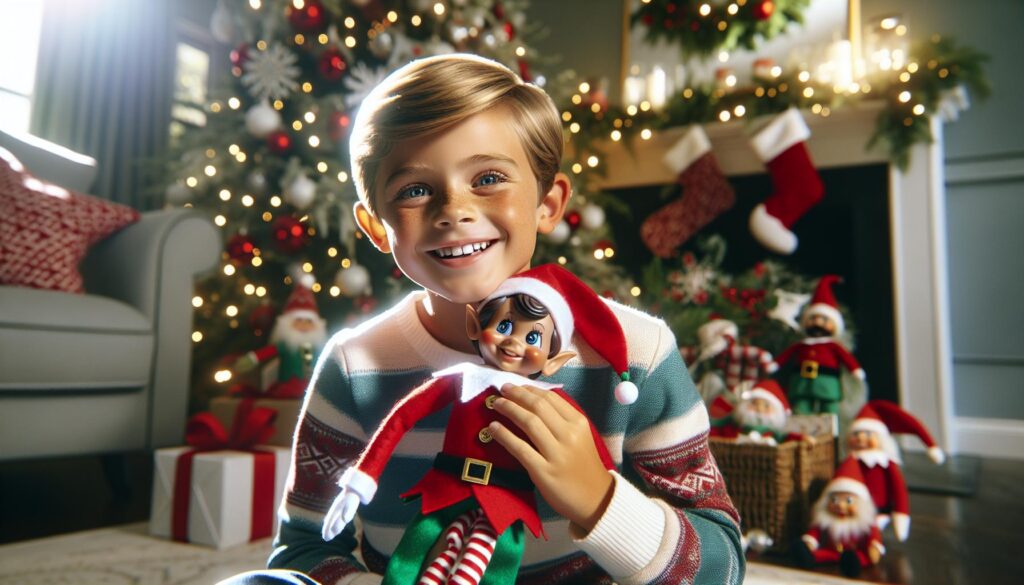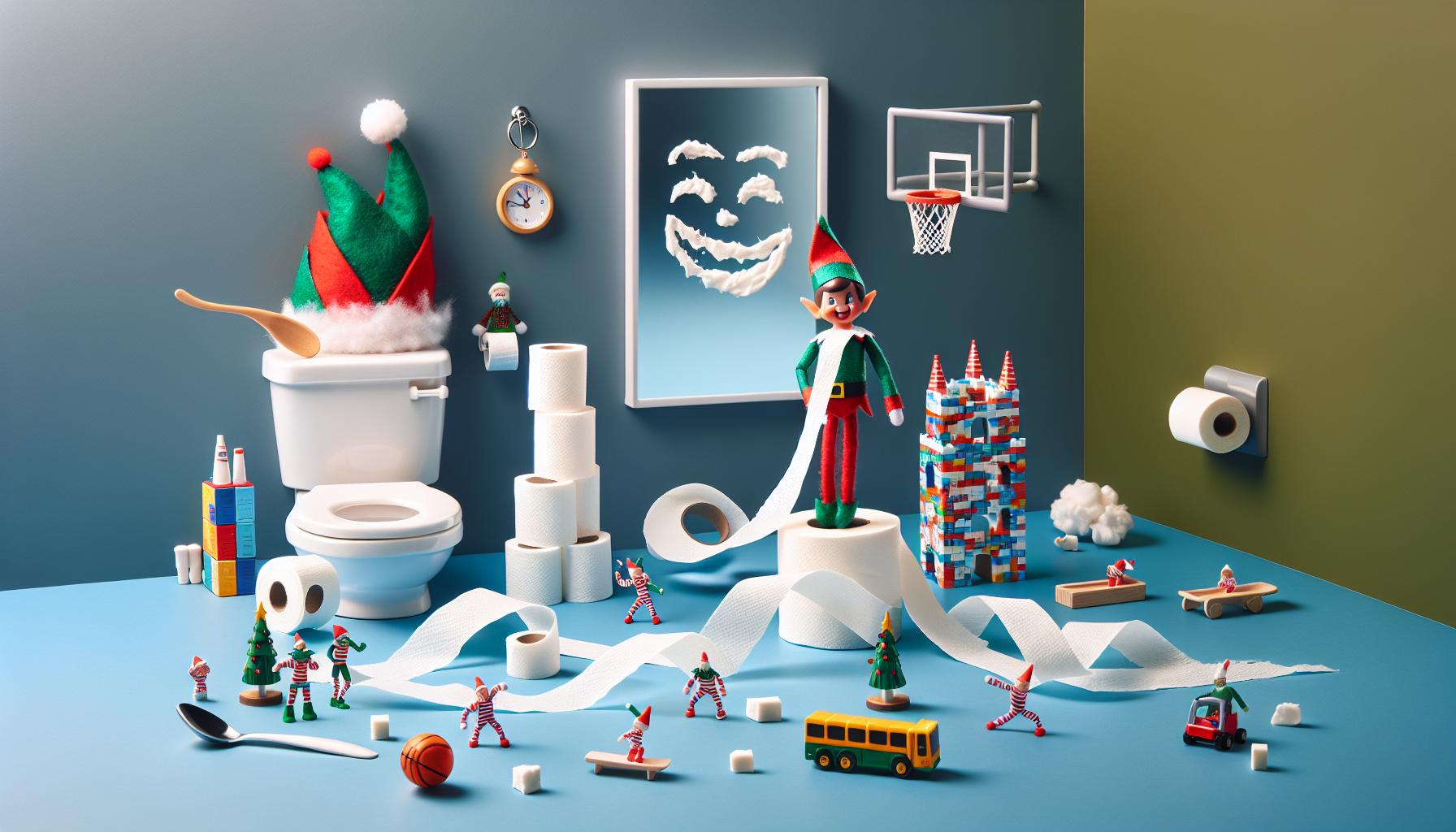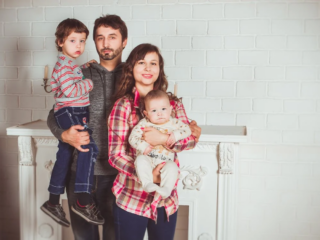
As the holiday season approaches, I can’t help but think about one of the most beloved Christmas traditions: the Elf on the Shelf. This mischievous little helper has become a staple in many homes, bringing joy and excitement to children everywhere.
But have you ever wondered about the origins of this festive phenomenon? Or perhaps you’re looking for creative ideas to keep your elf’s antics fresh and entertaining? In this article, I’ll dive into the world of the boy:_5dpczfw9iy= elf on the shelf, exploring its history, popularity, and sharing some fun tips to make the most of this magical tradition.
Key Takeaways
- Elf on the Shelf is a popular Christmas tradition involving a scout elf that observes children’s behavior and reports to Santa nightly.
- The tradition originated from a 2005 children’s book by Carol Aebersold and Chanda Bell, inspired by their family’s Christmas elf.
- Setting up an Elf on the Shelf involves naming the elf, establishing rules, and creating daily scenarios for the elf’s adventures.
- Creative ideas for boys include mischievous pranks and sports-themed setups to keep the tradition engaging and exciting.
- While some criticize the tradition for privacy concerns and consumerism, alternatives like Kindness Elves and Reindeer in Here offer similar holiday magic without these issues.
Boy:_5dpczfw9iy= Elf on The Shelf
The boy:_5dpczfw9iy= elf on the shelf tradition is a festive Christmas custom that’s captured the hearts of families across the United States. It centers around a special scout elf sent from the North Pole to help Santa Claus manage his naughty and nice lists. Here’s how it works:
- Arrival: The elf appears in homes at the beginning of the holiday season.
- Daily moves: Each night, the elf moves to a new spot in the house.
- No touching: Children are told not to touch the elf, or it’ll lose its magic.
- Reporting: The elf observes the children’s behavior and reports back to Santa.
The tradition typically starts on December 1st and continues until Christmas Eve. Families often name their elf and create elaborate scenarios for its nightly adventures. Some popular elf antics include:
- Zip-lining across the living room
- Creating snow angels in flour on the kitchen counter
- Reading Christmas stories to other toys
- Leaving small treats or notes for the children
This interactive holiday experience encourages good behavior in children and adds an extra layer of excitement to the Christmas season. It’s become a cultural phenomenon, spawning books, accessories, and even an animated special.
While the Elf on the Shelf is a relatively new tradition, it’s quickly become a beloved part of many families’ holiday routines. Its blend of magic, mischief, and moral lessons has made it a hit with both parents and children alike.
The Story Behind Elf On The Shelf
The Elf on the Shelf tradition began with Carol Aebersold and her daughter Chanda Bell’s 2005 children’s book, “The Elf on the Shelf: A Christmas Tradition.” This heartwarming tale stems from Aebersold’s childhood experience with her family’s own Christmas elf, Fisbee.
Aebersold and Bell’s story revolves around Santa’s scout elves who visit homes from Thanksgiving to Christmas Eve. These elves observe children’s behavior and report back to Santa nightly, helping him determine who’s naughty or nice. Each morning, the elf returns to a new spot in the house, creating a fun hide-and-seek game for children.
The book’s popularity skyrocketed, transforming into a cultural phenomenon. It’s sparked a new Christmas tradition for millions of families worldwide. The Elf on the Shelf brand has expanded to include:
- Various elf designs and skin tones
- Clothing and accessories for the elves
- Animated specials
- Mobile apps
This simple yet engaging concept has resonated with parents and children alike. It offers a tangible way to encourage good behavior during the holiday season while adding a touch of magic to everyday life.
The Elf on the Shelf’s success lies in its ability to blend modern marketing with traditional Christmas values. It’s become a fixture in popular culture, inspiring countless social media posts, DIY projects, and even parodies.
Despite its commercial success, the Elf on the Shelf remains true to its core purpose: fostering family togetherness and holiday spirit. It’s a testament to the enduring power of imagination and the joy of childhood wonder during the Christmas season.
How To Set Up Your Elf On The Shelf
Setting up your Elf on the Shelf is an exciting process that marks the beginning of a magical holiday tradition. Here’s how to get started with your new festive friend.
Naming Your Elf
Choosing a name for your boy:_5dpczfw9iy= elf on the shelf is a crucial first step in personalizing this holiday tradition. I recommend involving the whole family in a brainstorming session to come up with creative and unique names. Popular choices include:
- Festive names: Holly, Jingle, Tinsel
- Christmas-themed names: Snowflake, Cocoa, Gingerbread
- Playful names: Sparkle, Twinkle, Zippy
Once you’ve settled on a name, introduce your elf to the family and use it consistently throughout the holiday season. This helps create a stronger connection between your children and their new magical friend.
Establishing The Rules
Clear guidelines ensure a smooth and enjoyable boy:_5dpczfw9iy= elf on the shelf experience. I suggest implementing these key rules:
- Don’t touch the elf: Explain that touching the elf will make its magic disappear.
- The elf moves at night: Emphasize that the elf reports to Santa while children sleep.
- Talk to the elf: Encourage children to share their wishes and thoughts with the elf.
- Look, don’t seek: Remind kids to find the elf each morning but not to search for it deliberately.
Create a fun “rule book” or poster with these guidelines to help children remember and follow them. Consistency in enforcing these rules maintains the magic and excitement throughout the holiday season.
Creative Elf On The Shelf Ideas For Boys
Engaging boys with Elf on the Shelf antics requires a mix of creativity and playfulness. I’ve compiled a list of imaginative ideas that cater specifically to boys’ interests, ensuring they’ll eagerly anticipate the elf’s daily adventures.
Mischievous Pranks
Boys love a good prank, and the Elf on the Shelf provides the perfect opportunity for harmless mischief. I recommend setting up scenes where the elf appears to have caused some playful chaos:
- Toilet paper trail: Create a path of unrolled toilet paper leading from the bathroom to the elf’s hiding spot.
- Lego masterpiece: Position the elf atop a tower of Legos, surrounded by scattered bricks.
- Toothpaste artist: Draw a silly face on the bathroom mirror using toothpaste, with the elf holding the tube nearby.
- Shoe swap: Mix up everyone’s shoes and place the elf in the middle of the pile.
- Cereal surprise: Empty small amounts of different cereals into bowls, with the elf sitting among the mess.
- Miniature basketball: Create a tiny hoop using a paper cup and position the elf mid-dunk.
- Football field goal: Set up two forks as goal posts and place the elf kicking a small ball made of aluminum foil.
- Baseball slugger: Use a toothpick as a bat and a small bead or pom-pom as the ball, with the elf in batting stance.
- Hockey goalie: Fashion a small goal out of popsicle sticks and position the elf as a goalie, using a cotton ball as the puck.
- Race car driver: Place the elf in a toy car, surrounded by a track made of masking tape on the floor or table.
Benefits Of Elf On The Shelf For Children
The Elf on the Shelf tradition offers numerous advantages for children during the holiday season. It’s a festive activity that enhances the magic of Christmas while providing valuable developmental benefits.
Encouraging Good Behavior
Elf on the Shelf serves as a powerful motivator for positive behavior in children. Kids understand that the elf reports back to Santa each night, encouraging them to make good choices throughout the day. This external motivation often translates into improved conduct at home and school. Children learn to self-regulate their actions, knowing that their behavior is being observed. The elf’s presence creates a fun, non-confrontational way for parents to reinforce good behavior without constant reminders or scolding.
Fostering Imagination
The Elf on the Shelf tradition sparks children’s creativity and imagination. Each morning, kids wake up excited to discover where the elf has moved and what mischief it might have caused overnight. This daily surprise encourages them to think creatively about the elf’s adventures and potential hiding spots. Children often invent stories about the elf’s nighttime activities, enhancing their storytelling skills and narrative abilities. The imaginative play inspired by the elf helps develop problem-solving skills and abstract thinking, as kids consider new and inventive scenarios for their elf’s antics.
Addressing Concerns About Elf On The Shelf
While the Elf on the Shelf tradition brings joy to many families, it’s not without its critics. I’ll address two main concerns that have been raised about this holiday phenomenon.
Privacy And Surveillance Issues
The Elf on the Shelf’s role as a “scout” for Santa has sparked debates about privacy and surveillance. Critics argue it normalizes constant monitoring, potentially causing anxiety in children. Some child psychologists express concern that the elf’s watchful presence may lead to undue stress or fear of making mistakes. However, proponents counter that the tradition is meant to be lighthearted and fun, not a tool for control. They emphasize that parents can frame the elf’s presence positively, focusing on celebrating good behavior rather than punishing bad actions.
Consumerism Critique
Another criticism leveled at the Elf on the Shelf phenomenon is its perceived contribution to holiday consumerism. The brand has expanded beyond the original book and doll set to include various merchandise, from clothing to accessories. Critics argue this commercialization detracts from the true spirit of Christmas. They suggest the pressure to create elaborate scenarios and purchase additional products adds unnecessary financial strain on families. Supporters, however, maintain that the tradition’s core values of family bonding and imagination remain intact, regardless of additional purchases. They argue that creative, low-cost ideas can be just as effective in maintaining the elf’s magic.
Alternatives To Elf On The Shelf
While Elf on the Shelf has become a popular holiday tradition, there are several engaging alternatives that can bring just as much excitement to the Christmas season. Here are some creative options:
- Kindness Elves
- Focus on spreading joy and kindness
- Suggest daily acts of generosity for children to perform
- Encourage positive behavior without surveillance themes
- Reindeer in Here
- Arrives at the beginning of December
- Encourages children to take it on adventures
- Acts as a friend rather than a watchful observer
- Mensch on a Bench
- Hanukkah-themed alternative
- Teaches children about Jewish traditions
- Comes with a storybook explaining Hanukkah’s history
- The Christmas Angel
- Appears nightly to spread holiday cheer
- Leaves small gifts or notes of encouragement
- Emphasizes the spiritual aspects of Christmas
- The Shepherd’s Treasure
- Centers around finding the shepherd figurine from a nativity set
- Incorporates religious elements of Christmas
- Encourages family participation in hiding and seeking
- North Pole Ninjas
- Focuses on secret missions of kindness
- Includes printable mission cards for daily good deeds
- Promotes teamwork and stealth in spreading holiday joy
- Christmas Kindness Advent Calendar
- Features daily acts of kindness leading up to Christmas
- Can be homemade or purchased
- Combines traditional advent calendars with positive actions
These alternatives offer diverse ways to create holiday magic, foster good behavior, and promote family bonding without relying on the surveillance aspect of Elf on the Shelf. Each option brings its unique flavor to the holiday season, allowing families to choose traditions that align with their values and preferences.
Holiday Joy
The Elf on the Shelf has become a beloved Christmas tradition bringing joy magic and excitement to families worldwide. It’s more than just a festive decoration; it’s a tool for encouraging good behavior fostering creativity and creating lasting memories. While some concerns exist the tradition’s core values of family bonding and imagination remain strong.
Whether you choose the classic Elf on the Shelf or one of its alternatives there’s no denying the positive impact these traditions can have on children during the holiday season. By embracing the spirit of wonder and playfulness we can create magical experiences that’ll be cherished for years to come.















